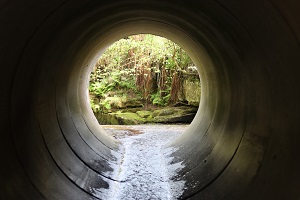
The Hidden Threats of Everyday Pollutants
The word “pollution” may conjure images of smog-filled skies, industrial waste, or oil spills. However, pollution encompasses a broader spectrum. Even the most innocuous substances, from spilled milk and restaurant odors, to energy emissions and construction dust can become environmental pollutants if released in large quantities or in the wrong place. This reality makes pollution insurance critical for organizations across various industries. Learning about the potential impact of everyday substances on the environment often leaves business owners surprised by the extent of their pollution liability.
Understanding the Broad Scope of Pollutants
Here are some examples of unexpected causes of pollution liability:
Odors: Persistent smells can disrupt communities and lead to lawsuits, as evidenced when a pet food company faced a class-action lawsuit due to “rancid” odors impacting residents’ quality of life. Restaurants also have liability over aromas; a restaurant in Portland, Oregon, closed due to repeated fines for cooking smells.
Dust: (including, but not limited to cement, construction, flour, chalk, and sawdust) can cause respiratory issues and environmental contamination. Residents filed a lawsuit against a concrete plant in, citing excessive dust and noise. Woodshops and woodworking equipment manufacturers are also constantly battling dangerous dust that can lead to sinonasal adenocarcinoma, among other health problems.
Organic Waste: Milk, Fruit/Vegetable Waste, Sugar, Starch, Molasses, Gelatin, Honey, Wine, Bread, and Grass Clippings are some common substances that become environmental pollutants when released into bodies of water. As they decompose, they deplete oxygen in the water, harming aquatic life.
A few examples include a milk products company, which was fined $20,000 for exceeding wastewater discharge limits after a cream spill and failing to report the incident. Another business was also fined after employees poured expired milk down a stormwater drain, leading to environmental pollution concerns. In another incident, a faulty wine-blending tank leaked 97,000 gallons of wine into local waterways, resulting in a fine.
Pollution liabilities may also include:
- Detergent/Soaps/Fabric Softeners: These can disrupt ecosystems by altering the pH of water bodies.
- Heated Water being discharged from industrial facilities: can create thermal pollution in aquatic ecosystems, including rivers, lakes, and oceans.
- Forestry and Yard Waste: branches, leaves, and tree clippings can result in stormwater pollution.
- Consumables: associated with hefty liability claims when their uncontrolled release into the environment has resulted in business interruption, fish kills, wetland destruction, or other natural resource damages.
These examples highlight the diverse and sometimes unexpected nature of pollutants. Regardless of how benign the source, businesses must recognize their potential environmental impact and prepare accordingly.
Pollution Insurance Coverage
Given the wide range of potential pollutants, businesses rely on comprehensive pollution insurance to address third-party claims, cleanup costs, emergency response expenses, business interruption, site specific pollution. Enhanced policies also offer coverage for disinfection expenses, reputation restoration, and more. Pollution insurance policies typically have an extremely broad definition of “pollutant,” providing a breadth of coverage far beyond those generally perceived as known and regulated threats to the environment.
The Beacon Hill Associates team works with agents around the country to add value to the relationship between you and your client by offering leading environmental and energy products. We can provide you with the tools to share exposure information and product options with your clients. To learn more, contact us today.
Type: Blog